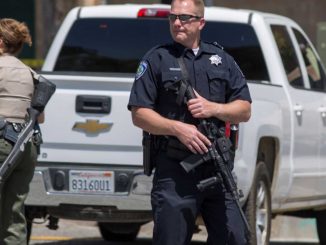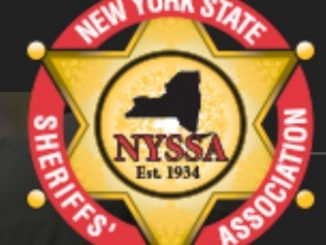Broward County had adopted guidelines designed in part to limit law-enforcement involvement with students, even those who posed a threat.
The closer you look at the school shooting in Parkland, Fla., the more you realize that it might have been one of the most preventable significant crimes in recent American history. We’re familiar by now with the government’s sins of omission — how it failed to act time and again in the face of evidence that the shooter presented a clear and present danger to the public.
But how about a sin of commission? Did an Obama-era policy designed to reduce the “school-to-prison pipeline” prevent police from using available tools that could have stopped the shooting?
One of the greatest challenges in American public life is to end mass incarceration without endangering the public. How can reform efforts keep violent offenders off the streets while still decreasing America’s extraordinarily high prison population?
The tragic experience in Broward County teaches us how not to fix the crisis. Stopping the “school-to-prison” pipeline by simply refusing to arrest violent students carries with it unacceptably high costs.
Yesterday Paul Sperry of RealClearInvestigations published a comprehensive report that reached an explosive conclusion:
Despite committing a string of arrestable offenses on campus before the Florida school shooting, Nikolas Cruz was able to escape the attention of law enforcement, pass a background check and purchase the weapon he used to slaughter three staff members and 14 fellow students because of Obama administration efforts to make school discipline more lenient.
Overstatement? Perhaps, but it contains an important element of truth. In 2013, the Broward County school board entered into an agreement with multiple law-enforcement agencies — including the Broward County sheriff — designed to limit the number of on-campus arrests.
Obama education secretary Arne Duncan even highlighted Broward County’s efforts to reduce out-of-school suspensions and try alternative forms of discipline. Broward County was reportedly “one of 53 major school districts” to adopt Obama-administration guidelines designed in part to limit law-enforcement involvement in school discipline.
Sperry quoted Peter Kirsanow, a conservative member of the Commission on Civil Rights:
Broward County adopted a lenient disciplinary policy similar to those adopted by many other districts under pressure from the Obama administration to reduce racial “disparities” in suspensions and expulsions. . . . In many of these districts, the drive to “get our numbers right” has produced disastrous results, with startling increases in both the number and severity of disciplinary offenses, including assaults and beatings of teachers and students.
Sperry also wrote a comprehensive essay for the New York Post in December outlining how lax discipline policies where enabling a wave of violence against teachers and students. He detailed incidents across the country, including mass resignations of teachers after escalating assaults.
In local news reports at least one former Broward school-resource officer has spoken bluntly about the pressure not to arrest students and said that the number of resource officers was cut in half.
"We are the laughing stock of the world right now."
Recently retired @browardsheriff school resource officer speaks out because he says current officers are afraid to. Says there is a shortage of SROs, and pressure not to arrest troubled students like Nikolas Cruz. @wsvn pic.twitter.com/rvkLYdiisq— Brian Entin (@BrianEntin) February 28, 2018
As Sperry relates, lax discipline meant that the Parkland shooter not only had no criminal record when he purchased his rifle, he didn’t even have the arrest record that may well have spurred additional inquiry when people did report their concerns to the FBI. Recall, he was disciplined for fighting, for assault, and for bringing bullets to school.
The upshot was that the lack of an arrest record made it difficult for police to confirm that Cruz was a proven threat and to intervene when they received call-in tips and complaints from neighbors, classmates and relatives about his stockpiling of weapons and desire to kill people, law enforcement officials say.
It’s too much to pin the Parkland shooting entirely on school policies — after all, there were other opportunities for police to intervene more effectively — but this history does highlight that there are profound risks in leniency, especially when leniency is directed at violent students. It’s one thing to show a measure of grace to students who commit non-violent offenses, it’s another thing entirely to enable and excuse those who commit assault.
No, let’s not involve law enforcement too soon when no one is under threat. But the simple fact is that some kids should face arrest!
The school-to-prison pipeline is a problem. We don’t want to see kids cut off from college, good jobs, or the military because of mistakes made in their youth. At the same time, law-abiding students and teachers have their own rights, including the right to teach and learn in a safe environment.
Yes, let’s be creative in addressing non-violent offenses. No, let’s not involve law enforcement too soon when no one is under threat. But the simple fact is that some kids should face arrest. Some kids should have criminal records. In trying to protect these kids from themselves, school districts are making innocent students and teachers more vulnerable. That’s an unacceptable trade-off.







Be the first to comment